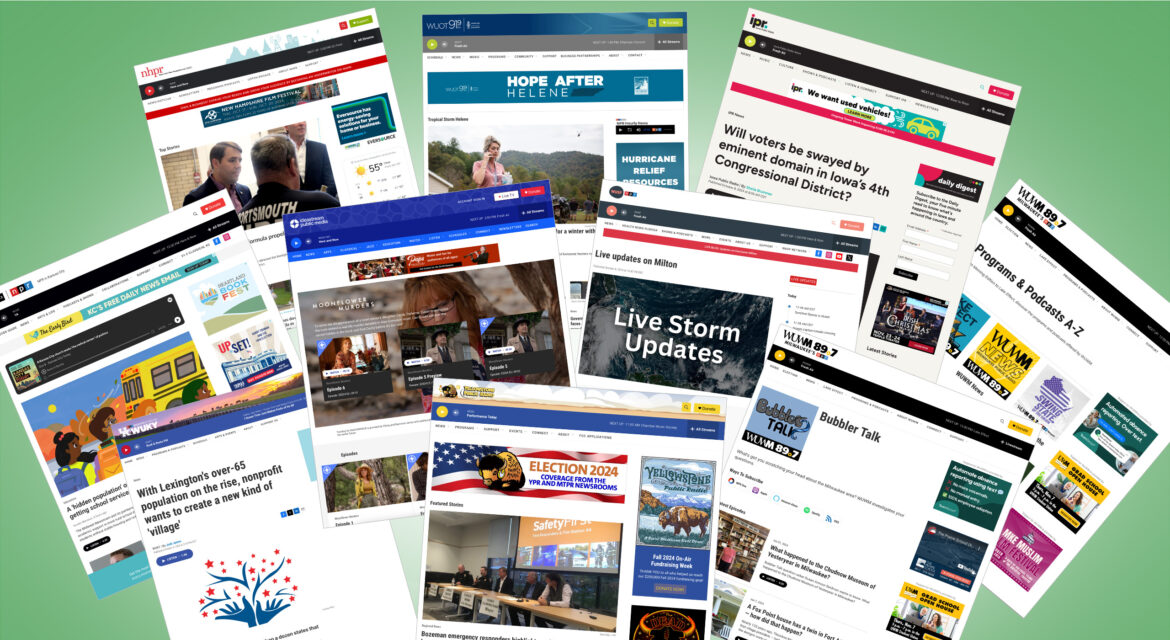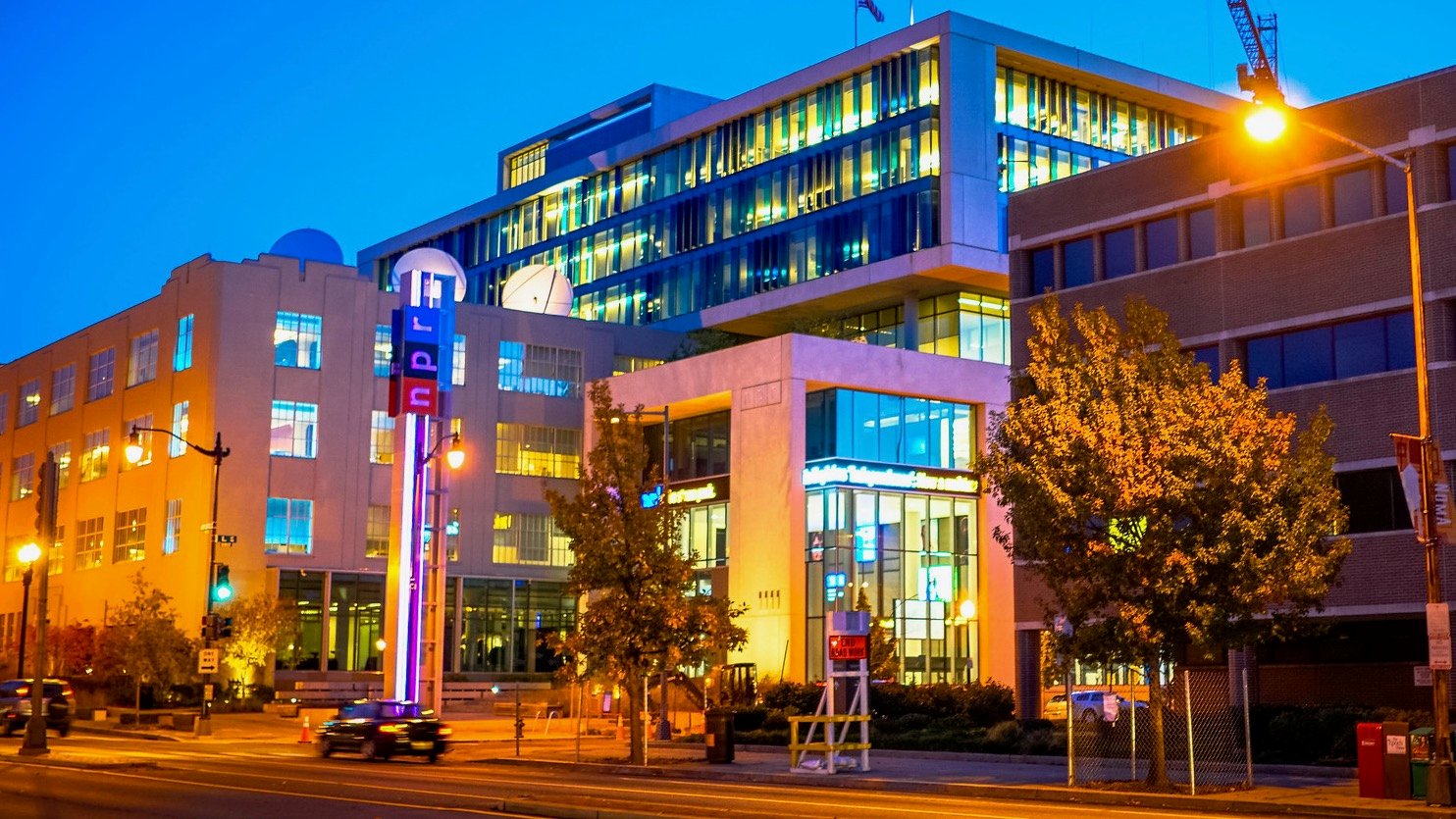With Grove adoption nearly complete, stations look to enhancements, single sign-on

NPR
With more than 200 public radio stations and NPR itself now using the Grove content management system for their websites, public media’s digital infrastructure overhaul is moving forward.
Plans include improvements to core functionality, as well as implementing new tools aimed at generating revenue, building membership and fostering collaboration. Stations have begun implementing single sign-on technology, and more will have the option to adopt Grove.
The Grove transition has been more than four years in the making. Stations began switching to the CMS in early 2020, and NPR adopted it earlier this year. The software comes from web-development company Brightspot, formerly Perfect Sense, and is largely a replacement for Core Publisher, a CMS made by NPR that many stations had found they had outgrown.
“Core Publisher was awful,” says Gabrielle Jones, VP of content for Louisville Public Media in Kentucky. Jones says Grove has better options for customizing pages and embedding outside media or data visualizations.
“I couldn’t imagine how we would be trying to accomplish some of the things that are pretty standard for most stations, even smaller stations to do today, if we were still on Core Publisher,” she says.
When Jones worked at KERA in Dallas, the station had a separate website for big reporting projects, as Core Publisher lacked the functionality to customize presentations.
“It was so hard to do anything that was special, anything that was going to have full-bleed images, anything that was going to have, like, graphics and animation built into it — you just develop that on a whole separate site,” Jones says.
In an email, NPR touted Grove’s search engine optimization and enhanced RSS tools, which can help stations increase their visibility in search results and in aggregators like Apple News. This is the type of digital infrastructure that helps newsrooms find and maintain audience in a world where social media traffic is unreliable and homepage visits are stagnant. Making stories findable and distributable is a fundamental function of websites, but given the ever-changing best practices and APIs of distribution channels, it can be difficult for small teams to implement, maintain and update even the most basic pieces of digital infrastructure.
Providing a common grounding of technology will “allow stations of all sizes to adopt and use interoperable, enterprise digital infrastructure they could not afford themselves and would support stations in growing their audience and revenue sources,” CPB VP of Digital Strategy and Innovation Beth Jacobs says in an email.
Grove isn’t the only such solution out there. WordPress offers newsrooms a version of its software under the Newspack brand (which is run by former NPR CCO Kinsey Wilson). Newspack also includes membership and monetization tools, plus professional support.
NPR and CPB plan to offer Grove to all public media stations, including those that are not NPR or PBS members but that receive Community Service Grants. There is currently no timeline for this deployment, but it would enable partnerships and interoperability among some of the smallest stations. The new CMS makes it easier for stations to display NPR stories on their pages and to pull in posts from other stations.
LPM collaborates with other stations in Kentucky and can quickly, and even automatically, carry relevant stories from partners. As a recent example, in our conversation Jones mentioned a station in western Kentucky covering the unveiling of a statue of John Prine. LPM could import the post or have it appear automatically under its music vertical. NPR mentioned that the network collaborated with stations in Maine on shared digital coverage of the Lewiston shooting in October 2023.
“There’s more work to be done to build out the collaboration functionality, but we’ve given ourselves the architectural foundation upon which we can start construction,” says Matti Henefield, a senior product manager at NPR. “I’m excited to see where we’ll be just a year or two from now.”
Single sign-on and customization
While NPR took the lead on developing Grove, PBS focused on single sign-on (SSO) technology. SSO is, as the name implies, one user name and password that can be used to log into multiple sites. The immediate benefit of this is simply letting stations know who their users are. They get an email and a name, and they know what users are looking at on their website.
“We were constantly thinking about how we can … ultimately provide a more curated experience to our users on our website,” says Chris Zellers, director of digital for WVIA, a joint licensee in Scranton, Pa., that’s currently one of nine stations using the public media SSO (PBS, NPR and the NPR app use it as well, and 36 stations have been onboarded for SSO). Right now, WVIA’s roughly 205 logged-in SSO users have access to a customized member page where they can get answers to frequently asked questions.
WVIA is working on offering an archive of live music performances from the station to logged-in users and potentially making all on-demand audio available only with a login. It’s free to create an account, and Zellers sees this as getting people into the funnel toward membership, then helping them on the path.
“I’d love to get this to the point where we can actually have this synced up with our membership CRM and have everything harmoniously talking to each other, so when somebody creates an account or logs in with an account, we can see that maybe they’ve attended one of our community events in the past,” Zellers says.
SSO is integrated with Grove and can be integrated into third-party CMSes for other stations. As development continues, stations could track users’ habits and offer algorithmic recommendations for stories to read or events to attend.
What makes SSO different from a standard login is that it can operate across sites. This opens new collaborative opportunities for public media stations in the same market that aren’t joint licensees.
“By combining all public media logins to the same login service we reduce the barrier of entry to our products,” says Kristoffer Crosby, VP of product development for PBS, in an email.
A PBS and an NPR station on Grove can trade stories, but if those stations are also using SSO, they could share member data or even offer joint memberships to people who give at certain levels. A person who gives to their NPR station might get Passport as a bonus. And a station hosting a film screening may one day be able to target promotions for that event to users who watch a lot of Ken Burns movies on Passport.
“I know there’s some bigger markets that are using more advanced technology already,” Zellers says. “They’re probably already halfway there. But we were very limited as a staff, and so … we see this as the best opportunity we have, leveraging what we can to kind of move that ball further along,” Zellers says.
By offering easy content sharing and back-end services like user tracking and member benefits, Grove and SSO shore up the challenges of keeping hundreds of stations, some with very small staffs, connected and up to date. As stations continue to struggle financially and seek out new sources of revenue, digital tools won’t necessarily generate that revenue, but they can help to ensure stations are accessible and that would-be donors have an easy path to give.







As the CEO of a TV-only licensee, I became aware of Grove in late 2022, and have been asking for access ever since. Hopefully, reaching the 200-station milestone will be the impetus for CPB and NPR to share the platform with their TV-only colleagues.